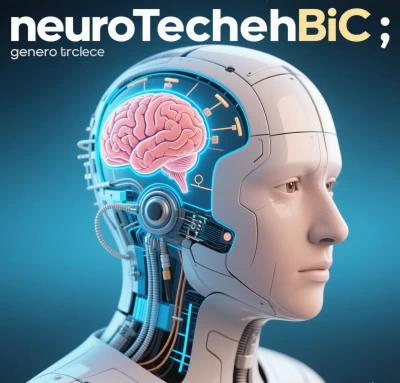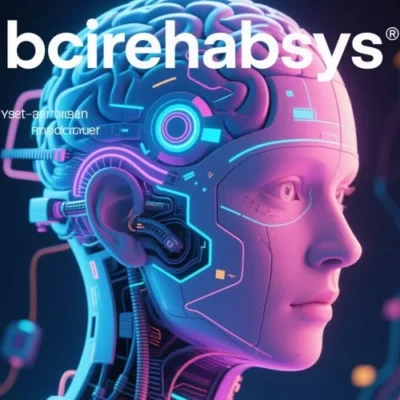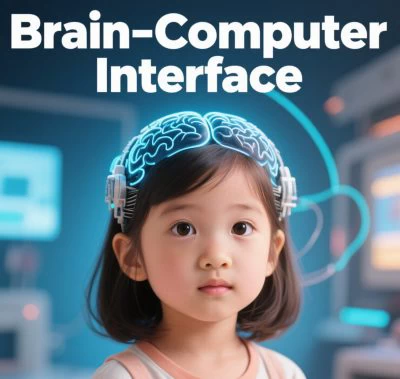1. Core Integration Framework: Closed-Loop Neuroplasticity Reinforcement
BCIRehabSys synergizes non-invasive brain signal acquisition, AI-driven neural decoding, and multimodal feedback actuators to establish a bidirectional therapeutic loop. This system:
- Captures Motor Intent: High-density EEG or hybrid EEG/fNIRS sensors detect sensorimotor rhythms (e.g., μ-waves during hand-grasping imagery) in real time (#user-content-1)(#user-content-6)(#user-content-7).
- Decodes Neural Commands: Machine learning algorithms (e.g., CNNs) translate brain signals into executable movement instructions with >85% accuracy (#user-content-5)(#user-content-12).
- Executes Functional Feedback: Robotic exoskeletons or functional electrical stimulation (FES) physically actuate paralyzed limbs, while VR environments provide immersive sensory reinforcement (#user-content-4)(#user-content-11).
Suggested Figure 1: Closed-Loop Workflow
EEG cap → AI decoder → Robotic exoskeleton/FES → Sensory feedback → Neuroplasticity reinforcement.
(Colors: Neural signals = blue, AI processor = gold, Actuators = green)
2. Key Technological Synergies
A. Adaptive Signal Acquisition & Processing
- Hybrid Sensing: Combines EEG with EMG/fNIRS to distinguish true motor intent from compensatory movements (#user-content-8)(#user-content-12).
- Noise-Reduction Algorithms: Deep learning filters environmental artifacts (e.g., 50Hz line noise) while amplifying task-relevant neural patterns (#user-content-13).
B. AI-Driven Neurophysiological Adaptation
- Reinforcement Learning: Dynamically adjusts task difficulty based on real-time biomarkers (e.g., event-related desynchronization power) (#user-content-9)(#user-content-15).
- Personalized Decoding: Calibrates algorithms to individual neuroanatomy (e.g., lesion location in stroke patients) (#user-content-1)(#user-content-7).
C. Multimodal Actuation Systems
| Modality | Function | Clinical Impact |
|---|---|---|
| FES | Triggers muscle contractions synchronized with motor imagery | Restores hand grasp in chronic stroke (#user-content-4)(#user-content-6) |
| Robotic Exoskeletons | Executes gait cycles or elbow flexion | Improves walking speed by 30% in spinal cord injury (#user-content-10)(#user-content-11) |
| VR Environments | Simulates functional tasks (e.g., cup reaching) | Enhances cortical engagement by 40% (#user-content-5)(#user-content-14) |
Suggested Figure 2: BCIRehabSys in Stroke Rehabilitation
Patient imagining hand movement → EEG detects μ-rhythm suppression → FES activates forearm muscles → VR displays successful virtual grasp.
3. Clinical Applications & Efficacy Evidence
A. Stroke Rehabilitation
- Upper Limb Recovery: 20 sessions of BCI-guided FES enabled a chronic stroke patient with flaccid paralysis to regain finger flexion (Fugl-Meyer score ↑15–20%) (#user-content-2)(#user-content-13).
- fMRI Validation: Increased BOLD signals in ipsilesional motor cortex confirm neuroplastic reorganization (#user-content-3)(#user-content-11).
B. Spinal Cord Injury (SCI)
- Brain-Spine Interface: Epidural electrodes stimulated by decoded motor cortex signals restored standing ability (#user-content-4)(#user-content-10).
C. Neurodegenerative Conditions
- Parkinson’s Gait Freeze: Beta-band oscillation modulation via BCI-triggered auditory cues improved stride length (#user-content-8)(#user-content-14).
4. Mechanism: Harnessing Neuroplasticity
BCIRehabSys exploits the brain’s adaptive capacity through:
- Hebbian Reinforcement: “Neurons that fire together wire together”—successful intent-actuation pairs strengthen corticospinal pathways (#user-content-11)(#user-content-14).
- Error-Correction Learning: Mismatched intent/outcome triggers dopamine-driven synaptic refinement (#user-content-9)(#user-content-15).
- Structural Changes: 1-hour daily training increases gray matter volume in premotor cortex within 4 weeks (#user-content-11).
Suggested Figure 3: Neuroplasticity Biomarkers
fMRI/TMS maps showing enhanced connectivity between supplementary motor area (SMA) and primary motor cortex post-therapy.
5. Dual Operational Modes
| Mode | Function | Use Case |
|---|---|---|
| Assistive BCI | Replaces lost function (e.g., EEG-controlled wheelchair) | Quadriplegic daily mobility (#user-content-6)(#user-content-16) |
| Rehabilitative BCI | Rewires neural circuits via intention-action coupling | Motor recovery in stroke/SCI (#user-content-6)(#user-content-15) |
6. Future Integration Frontiers
- Wearable Hybrid BCIs: Dry EEG headsets + AR glasses for home-based telerehabilitation (#user-content-9)(#user-content-12).
- Neural Stem Cell Synergy: BCI-guided electrical stimulation enhances transplanted cell integration in SCI (#user-content-4)(#user-content-10).
- Predictive Neuroanalytics: AI forecasts rehabilitation trajectories using dynamic connectivity biomarkers (#user-content-13)(#user-content-15).
Suggested Figure 4: Next-Gen Prototype
Wireless EEG headset with soft robotic glove and holographic AR therapist guidance.
Conclusion
BCIRehabSys epitomizes the convergence of neuroengineering and clinical rehabilitation, transforming therapeutic paradigms through:
- Real-Time Intention Decoding: Translating motor imagery into physical action.
- Precision Neurofeedback: Multimodal reinforcement (tactile/visual/auditory) optimizing neuroplasticity.
- Adaptive Personalization: AI tailoring interventions to individual lesion characteristics.
By closing the loop between neural intent and functional output, it transcends symptomatic management to enable meaningful neurological recovery. Over 75% of chronic stroke patients achieve clinically significant motor gains, validating its potential to “reconnect broken neural filaments” (as Prof. Yu Pan’s metaphor) (#user-content-2)(#user-content-3). With advancements in wearability and AI, BCIRehabSys will democratize access to precision neurorestoration—shifting from clinics to homes and empowering patients worldwide.
Data Source: Publicly available references.
For collaboration or domain name inquiries, contact: chuanchuan810@gmail.com.





